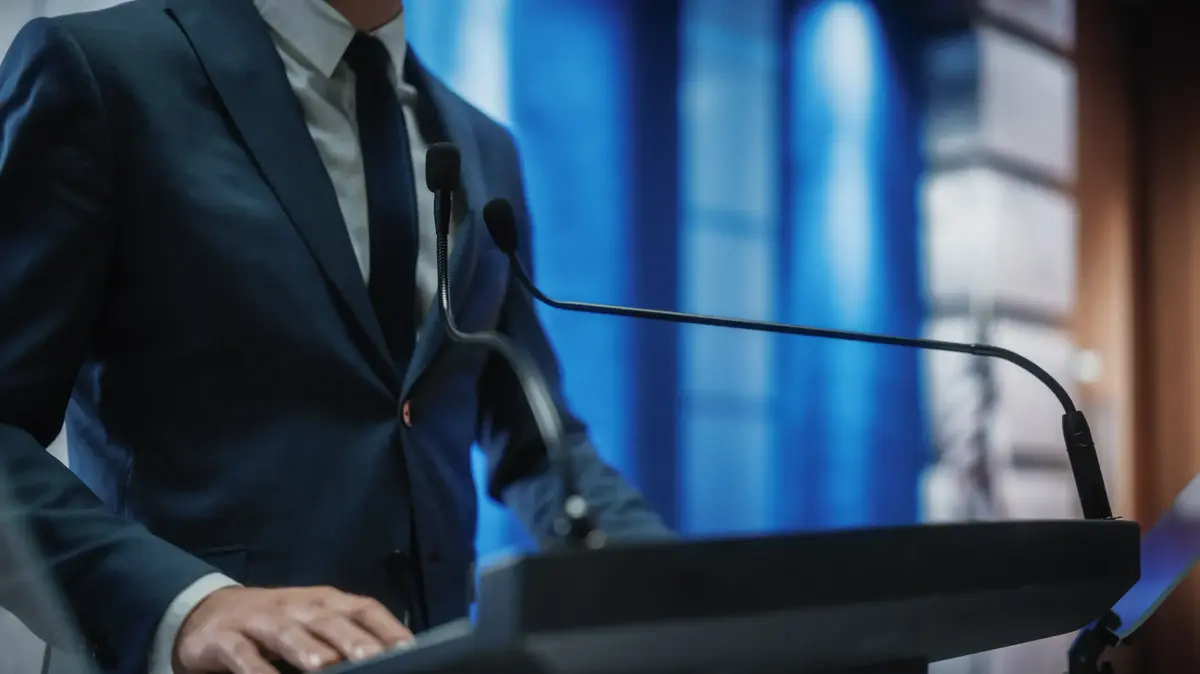(Credit: RHONA WISE/AFP via Getty Images)
(CNN Spanish) --
If you are asked what you see in this photo, your immediate answer will most likely be that "there is a deer crossing a road."
However, there is another possible answer: “there is a road through a forest”.
This example "serves a lot to illustrate what is happening with wildlife," explained some time ago in an interview with CNN en Español María José Villanueva, coordinator of the Conservation Cabinet for Latin America and the Caribbean of the WWF organization.
It is purely a matter of optics: if your focus is placed first on human needs, you will identify the deer as the disruptive element.
However, if you are able to zoom in, you will realize that the first to introduce a disturbance were us humans, by building a road in the middle of the habitat of these mammals.
If you manage to analyze the spaces that surround you in this key —taking into account that less than 3% of the entire territory of the planet remains intact from an ecological point of view, according to a study published in the journal
Frontiers in Forests and Global Change—
you will be
one step closer to the solution to our problem of coexistence with wildlife and, consequently, to the biodiversity crisis that is devastating our planet.
The story of the jaguar that ate a dog
Habitat destruction is one of the main factors driving biodiversity loss.
There are plenty of figures to illustrate this problem: the populations of vertebrate animals —a category that includes mammals, birds, amphibians, reptiles and fish— on the planet have decreased by 69% on average between 1970 and 2018, according to the Living Planet Report 2022 published by WWF.
In Latin America and the Caribbean, home to a large part of the so-called 'megadiverse countries', the percentage has climbed to 94% in almost 50 years.
advertising
The populations of vertebrate animals on the planet have decreased by 69% on average between 1970 and 2018. In Latin America and the Caribbean, the percentage has climbed to 94% in almost 50 years.
For those of us who live in built-up areas, it may be difficult to fully understand the notion of "habitat loss."
However, in recent years, episodes have multiplied that make this loss tangible, close and even a source of fear.
Throughout the planet, we have witnessed how animals that we would normally only see in a nature reserve or a zoo advance on our human environments such as capybaras in Argentina, elephants in China and even jaguars in Mexico.
(Credit: YJ Rey-Millet/WWF)
Villanueva gives the example of a colleague who bought a piece of land in Quintana Roo and there a jaguar, the king of cats —and the biggest predator— in America, ate her dog.
What happened?
Jaguars have fewer and fewer spaces to hunt.
And they also have less and less prey, since they are hunted for human consumption.
And the dogs, slow and in abundance, are like a "delicacy" for these hungry cats.
Behind this, what happens is that the jaguars have lost close to 50% of their original habitat and "this has led to processes in which they moved large areas to look for a mate, to look for food, they can no longer do so." because they already have a highway or they have a tourist complex (in the middle)”, says Villanueva.
(The conservation of jaguars, also known as jaguars, is key for ecosystems to remain healthy for two reasons, explains the WWF: on the one hand, as they are the largest predators on the continent, they regulate the sizes of the populations of other animals On the other hand, since they need large portions of territory to develop, they are an "umbrella species", that is, "a species that, when protected, preserves the habitat of hundreds of other species that share its home")
The climate change factor
Changes in the soil and the overexploitation of flora and fauna are the main factors associated with the degradation of biodiversity, as well as pollution and the presence of invasive alien species, according to WWF.
And there is another factor to take into account: climate change.
"Something that complicates the situation is that with climate change, habitats are moving, very slowly, but habitats and the different resources that animals need are moving," Jeffrey Parrish, director general of Protection, previously explained to CNN en Español. of Oceans, Land and Water from The Nature Conservancy.
So the animals need to move to new places to get the resources they need to survive.
(Scientists defined that global warming should be limited to 1.5 degrees Celsius above pre-industrial levels to avoid the worst consequences of climate change, and according to a recent UN report, we are on track for warming of between 2. 1 and 2.9 degrees Celsius if countries' promises to date are taken into account —the promises, which are sometimes much more than the actual achievements—).
A powerful example of the impact of environmental change was captured by photographer Dmitry Kokh, winner of the 2022 Best Wildlife Photography Award, who used a low-noise drone to capture this image of polar bears on the small island of Kolyuchin, in the Russian High Arctic.
Dmitry Kokh's "The Bear House" depicts an eerie scene of fog-shrouded polar bears in the long-abandoned settlement on Kolyuchin Island in Russia.
Behind the beauty of the image's composition and colors, there is a dramatic reality: human-induced climate change has reduced sea ice, making hunting more difficult for polar bears and They are forced to search for food in unpredictable environments.
From "human vs. nature" to "human in nature"
Stopping the degradation of habitats is a fundamental piece of the plan to conserve biodiversity.
“The change in land use must stop,” says Villanueva, “and we must not continue expanding our urban march”, which can be achieved with better planning.
In addition to conserving habitats, Parrish explains the need to work on corridors that allow species to move wherever they find convenient.
“We have to establish corridors so that (the species) can move safely.
Those corridors can be, for example, a path to connect two habitat nuclei, like a highway that connects two cities”, he explains.
Villanueva points to this same solution with an example: if we have two protected areas where the tapir lives and an agricultural crop in the middle, we must work so that it has the adequate infrastructure so that the tapir can move from one area to the other.
In short, in the words of Villanueva, it is about a change in narrative that promotes a different way of acting: “We have to move from the 'human vs.
nature' to 'human within nature' (...) Transform conflict into coexistence”.









